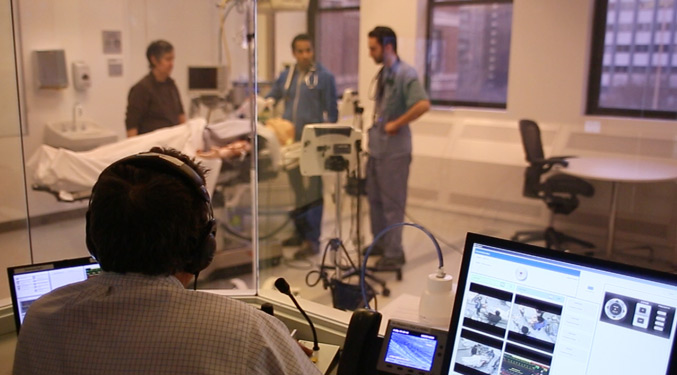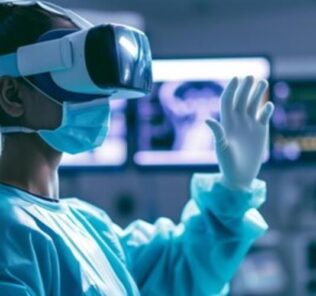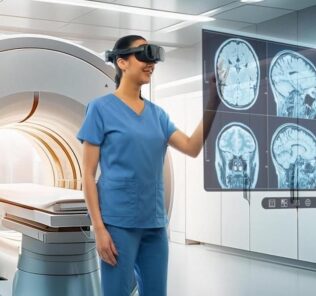Medical Simulation Methodologies: A Closer Look
The latest Healthcare Simulation Book from the Springer Published Series has been published — and its all about operations! “Comprehensive Healthcare Simulation: Operations, Technology, and Innovative Practice”, provides a focus on the implementation of healthcare simulation operations, as well as the type of professional staff required for developing effective programs in this field. Chapter 2, by Jesika S. Gavilanes and Elena An, asked the “Who, What, and Where” of different “Types of Healthcare Simulation”. Today we take a closer look at Chapter 3 by Matthew David Charnetski, Director of Simulation Learning at New York Institute of Technology at Arkansas State University, who explored Medical Simulation Methodologies.
Choosing an Appropriate Simulation Methodology
With all of the following tools and methods available, how does a program decide what best fits the needs of its learners? By looking at the objectives for the scenario, considering the level of the learner and the anticipated complexity desired, each program can mix and match the fol- lowing tools to create a learning environment that is best suited to fit the planned educational needs. Equipment possibilities are nearly endless, so one must consider the level of fidelity desired, expected skill or knowledge to be trained, required staff, necessary consumables, budget allotment, and access to functioning equipment. All of these elements together will allow a determination of what methodologies can be recommended in order to design and execute an appropriate simulation event.
Sponsored Content:
High-Fidelity Versus Low-Fidelity
Fidelity refers to the level of realism that may exist within a simulation scenario. Adjusting the level of fidelity in a simulation can be as simple as adding additional sensory cues to augment the patient presentation, such as moulage, prostheses, or props. Sounds, and even smells, can be used to contribute to a scenario’s perceived realism. Realism has been suggested to be more than just sight, touch, sound, and smell. There are three classifications for fidelity proposed to encompass a learners’ sensory and psychological experience. Psychological fidelity, equipment fidelity, and environmental fidelity are components of the scenario as a whole. While there is no single distinction between devices that are high- and low- fidelity, these terms suggest a concept of realism where high-fidelity is often associated with greater complexity, cost, and physiologic representation.
High-Technology Versus Low-Technology
A high-technology simulation involves technologically enhanced methods for addressing the training needs of the simulation. A low-technology simulation might use a simple analog to allow the performance of a task. The level of technology deployed in a simulation refers to the equipment that may be used within a scenario. However, more equipment and technology does not always mean the simulation is more realistic. Therefore, high- versus low-technology is an important distinction that may have little or no bearing on the fidelity of the clinical simulation.
Sponsored Content:
Manikin-Based Simulation
High-technology manikins paired with well-designed manikin-based simulation scenarios are considered to offer a higher-fidelity experience for the learner. A simulated full-body manikin patient can mimic a real patient encounter because the device can provide speech, display physical exam findings, and produce modifiable physiologic parameters in the form of vital signs. Further, such physiologically accurate full-body patient simulators can incorporate features and interactive components that might also be found in a human patient but could not be well simulated by a person playing the role of a patient. For example, when deploying manikins on the high-technology spectrum, one may find manikins that have abnormal breath sounds, irregular heart rhythms, or eyes that have variable pupil sizes or blinking.
Task Trainers
Often, these trainers are low-technology but can vary in their fidelity. Some can be bulky, making them difficult to move or integrate into a simulation with other equipment such as a full-body manikin. However, when compared to full-body manikins, most provide more nuance for simulating the skill provided and can be used in nearly any facet of a simulation program. For example, in a manikin, there may be only one place to start an IV. In a task trainer, the stand-alone arm may have multiple sites to initiate an IV, and it could also allow for the administration of fluid.
Because they serve a less global use than other simulation methodologies, task trainers can have more specific details related to the task performed than a manikin or standardized patient. For instance, a task trainer and full-body patient simulator may both allow for a digital rectal exam. The task trainer, however, is designed to offer multiple different prostates or other attachments allowing for the simulation of different conditions, while the full-body patient simulator is designed to have only normal anatomy and physiology for this area at baseline.
Virtual Reality / Augmented Reality Simulators
Virtual reality (VR) and augmented reality (AR) are touted as the next generation of virtual simulation. These two distinct tools allow for the creation of environments to transport learners into education settings disparate from the world the learner is currently occupying. This is ideal for education programs that may have limited access to simulation or patient care areas. Both methodologies lower the resource cost of ancillary treatment equipment while providing a potentially dynamic patient interaction that can adjust based on the student’s performance.
Virtual reality uses specialized computer equipment to create the visual and auditory simulated world for the learner. These systems are often complemented with another device used to interact within this virtual reality space. Typically, learners wear a headset or goggles and earphones while holding some sort of controller as they navigate the virtual world that is similar to a video game. In this world, the learner progresses through problems while utilizing the tools provided to interact with, assess, and treat their patient.
Augmented reality is similar to virtual reality, but the computer-generated images and environment of augmented reality are superimposed on a real-world framework. This is in contrast to a virtual reality environment where all aspects of imagery and stimulation are artificially created.
Additional Methodologies Also Covered in This Chapter
- Standardized Patients/Simulated Participants
- Roleplaying
- Storytelling
- Case-Based Learning
- Computer/Constructed Simulation
- Virtual Simulation
- Virtual Reality Surgical and Procedural Simulators
- Moulage
- Auditory Simulation
- Visual Simulation
- Olfactory Simulation
- Audiovisual Equipment
- Hybrid Simulation
- And more!
More Key Take Aways From Latest Simulation Operations Book Include:
- Practical guide helps prepare professionals for the broad scope of simulation in healthcare
- Defines the domains of medical simulation operations
- Focuses on the development of the healthcare simulation technology specialist
- Written and edited by leaders in the field of clinical simulation
Written and edited by leaders in the field, Comprehensive Healthcare Simulation: Operations, Technology, and Innovative Practice is optimized for a variety of learners, including healthcare educators, simulation directors, as well as those looking to pursue a career in simulation operations as healthcare simulation technology specialists. Grab your copy today!
Get The Soft Cover Here!
Download the eBook Version Now!
Or Get from Amazon!
Mr. Matt Charnetski PhD(c), MS, NRP, CHSOS, CHSE has been in and around healthcare for his entire life. Academically he started with a BA in Biology from Grinnell College, a Masters in Medical and Healthcare Simulation, and is currently a PhD candidate at Maastricht University in the Netherlands. Geographically, he spent most of his life in and around Iowa, punctuated by time spent in East Africa, Antarctica, wandering the earth, Kazakhstan, Arkansas and now landing in New Hampshire. Mr. Charnetski is currently the Director of Simulation Based Education and Research at Dartmouth Hitchcock Medical Center in Lebanon, NH. Prior to this, Mr. Charnetski was the founding Director of Simulation and an Assistant Professor at Nazarbayev University in Nursultan Kazakhstan and the founding Director of Simulation Learning at NYIT – Arkansas in Jonesboro, AR. Professionally, Mr. Charnetski ha had a winding path through Logistics, Search and Rescue, IT, EMS, and various levels of Simulation to arrive at what he describes as “the best and strangest career I’ve ever had.” He is actively involved with SSH on the Internal Relations Committee and with INACSL in the review of some of the current standards of best practice. Mr. Charnetski also serves as Secretary of the Board of Directors of SimGHOSTS.
Sponsored Content:


















